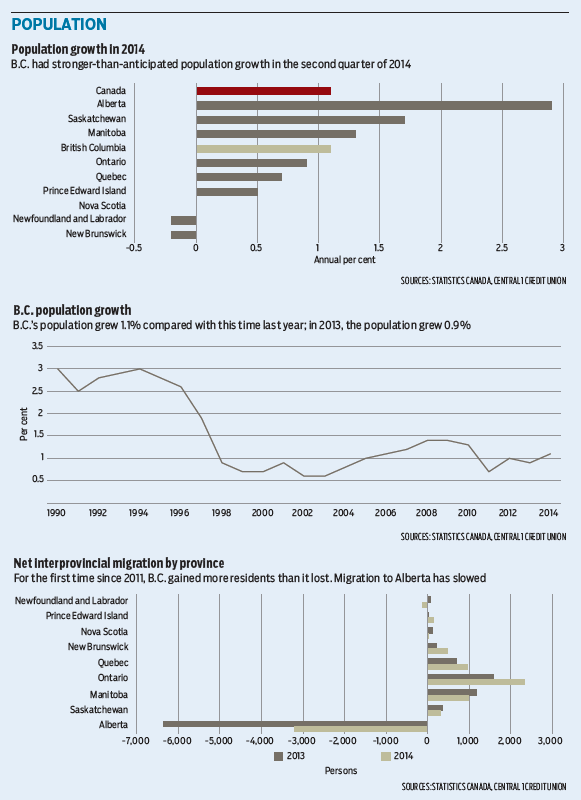Statistics Canada’s latest population data release points to mild momentum in B.C. in the second quarter and stronger-than-anticipated growth over the past year. B.C.’s population is estimated to have reached 4.63 million as of July 1. While only 1.1% above a year ago and in line with the subdued pace since 2011, it was still a significant improvement from the 0.9% gain last year. We had forecast a gain of about 1%.
Despite mild growth, B.C. still counted itself among the higher-growth western Canadian provinces over the past year – albeit barely.
While some of B.C.’s upside surprise reflected data revisions, the latest numbers suggest a stronger flow of international and interprovincial migrants over the past year. On the international front, net international immigration jumped 16% from a year ago to about 35,640. The gain reflected a 5% increase in the number of landed immigrants to the province, while the number of net non-permanent residents rebounded sharply. We can’t put a number to the source of landed immigrants yet, but if recent history is a guide, more than 70% of the flows were likely from Asian nations. The pace of international immigration remains below pre-recession levels, but these numbers should continue to climb as improved economic conditions in both Canada and the source countries drive mobility.
Net interprovincial migration shifted into positive territory for the first time since 2010-11. B.C. gained about 2,270 residents from other areas of Canada, compared to a loss of 1,870 in the prior year. This was largely driven by a lower net outflow to neighbouring Alberta, which improved from a deficit of more than 6,300 persons in 2012-13 to about 3,200 over the past year – driven mostly by a higher flow of Albertans moving west. In addition, the net flow from Ontario continued to climb.
Although the improved interprovincial count is broadly consistent with our expectations of improving flows, it remains to be seen if the gain can be maintained. Labour market dynamics are a significant driver of interprovincial migration, and hiring activity in Alberta and Saskatchewan remain well ahead of that in B.C., which should prove a draw for not only B.C. residents but also others across the country.
We expect mild improvement in population growth rate over the next few years to about 1.3% as the economy and labour market improvements drive international flows and sustain positive interprovincial contributions. •
Bryan Yu is an economist at Central 1 Credit Union.





